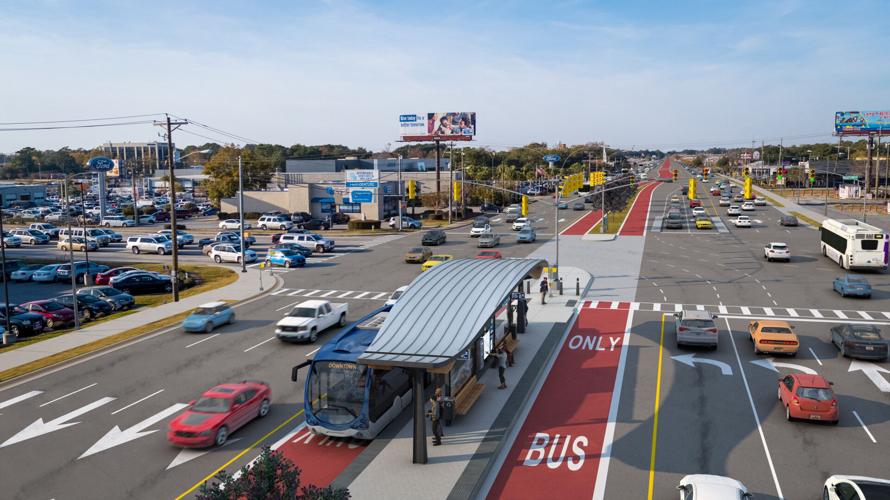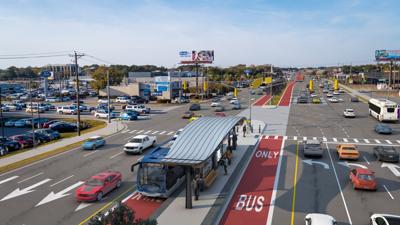The planned high-speed bus system from Charleston to Ladson known as Lowcountry Rapid Transit has received federal approval to move into the engineering phase, a crucial next step.
Meanwhile, the cost estimate for the project has climbed from $360 million just two years ago to $625 million.
“I think we’ve all seen prices rise across the board in this inflationary environment," said Daniel Brock, spokesman for the Berkeley-Charleston-Dorchester Council of Governments. “As the project progressed, things changed."
He said the $625 million estimate includes inflation projected out to 2030 and $145 million for contingencies, and BCD-COG doesn't think the project will end up costing that much.
The new Federal Transit Administration approval means the council and partners can work on hiring an engineering design company, and have federal authority to pay for engineering work and buy vehicles. The new cost estimate was part of the plan and studies the FTA approved, Brock said.
The transit plan is aimed at relieving commuter traffic on Interstate 26 and is expected to spur development along Rivers Avenue in North Charleston where bus-only lanes would be created.
The more than 21-mile rapid bus system would add needed transit options, particularly in North Charleston, where more than 8 percent of households don't have a vehicle.
The federal government, it is hoped, would eventually contribute the maximum allowable 60 percent of the project cost, or $375,060,506. The local funding would come from Charleston County's half-cent sales tax.
"This is the state’s first mass transit infrastructure project, and it is now one important step closer to reality," Mike Seekings, chairman of the Charleston Area Regional Transit Authority, said in a statement from BCDCOG.
Bus rapid transit systems exist in several other states and are seen as a way to get many of the benefits of a commuter train line without the cost. A BRT line typically involves bus-only lanes, passenger platforms somewhat similar to train stations, and higher speeds and fewer stops than typical city buses.

The proposed route for the Lowcountry Rapid Transit line. File/BCDCOG/Provided
"The innovative Lowcountry Bus Rapid Transit project has the potential to improve the quality of life and reduce congestion for Charleston and North Charleston," S.C. Department of Transportation Secretary Christie Hall said in BCDCOG's announcement.
The process of creating the system has not been rapid and there are still years to go. Studies of transit alternatives to I-26 date back to the mid-2000s when passenger rail was thought to be an option.
Following a two-year engineering phase, and assuming federal approval of full funding, the Lowcountry Rapid Transit system could move to construction and open in 2028, according to BCDCOG.
The engineering phase would complete the final design of the transit system.












